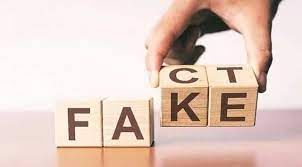UPSC Daily Current Affairs- 3rd June 2023 | Current Affairs & Hindu Analysis: Daily, Weekly & Monthly PDF Download
GS-I
Adi Kailash
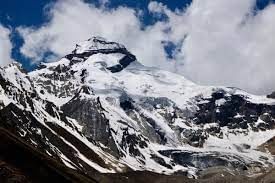
Why in News?
Over 180 pilgrims, returning from Adi Kailash, were recently rescued by a joint team of the state disaster response force (SDRF), revenue police and Seema Suraksha Bal (SSB) from Najang, where they had been stranded following a massive landslide.
About Adi Kailash:
- It is considered to be one of the five Kailash mountains and is believed to be the abode of Lord Shiva.
- It is also known as Shiva Kailash, Chota Kailash, Baba Kailash, or Jonglingkong Peak.
- Location:
- It is located in the Pithoragarh district of Uttarakhand.
- It is situated among the Kumaon Himalayan mountain range.
- It lies in close proximity to the Indo-Tibetan border near Sin La Pass.
- Altitude: 6310 meters
- Adi Kailash is known as the replica of Kailash Mansarovar. It is immensely popular among devotees of Shiva.
- It is scripted in Hindu Mythology that Shiva meditated and stayed at Adi Kailash for some time.
What is Pancha Kailash?
- These are the five holy peaks that are said to be the abodes of Lord Shiva.
- The five peaks are Kailash Manasarovar, Adi Kailash, Kinnaur Kailash, Shrikant Mahadev Kailash and Manimahesh Kailash.
Source: Hindustan Times
Lithium Reserves in India
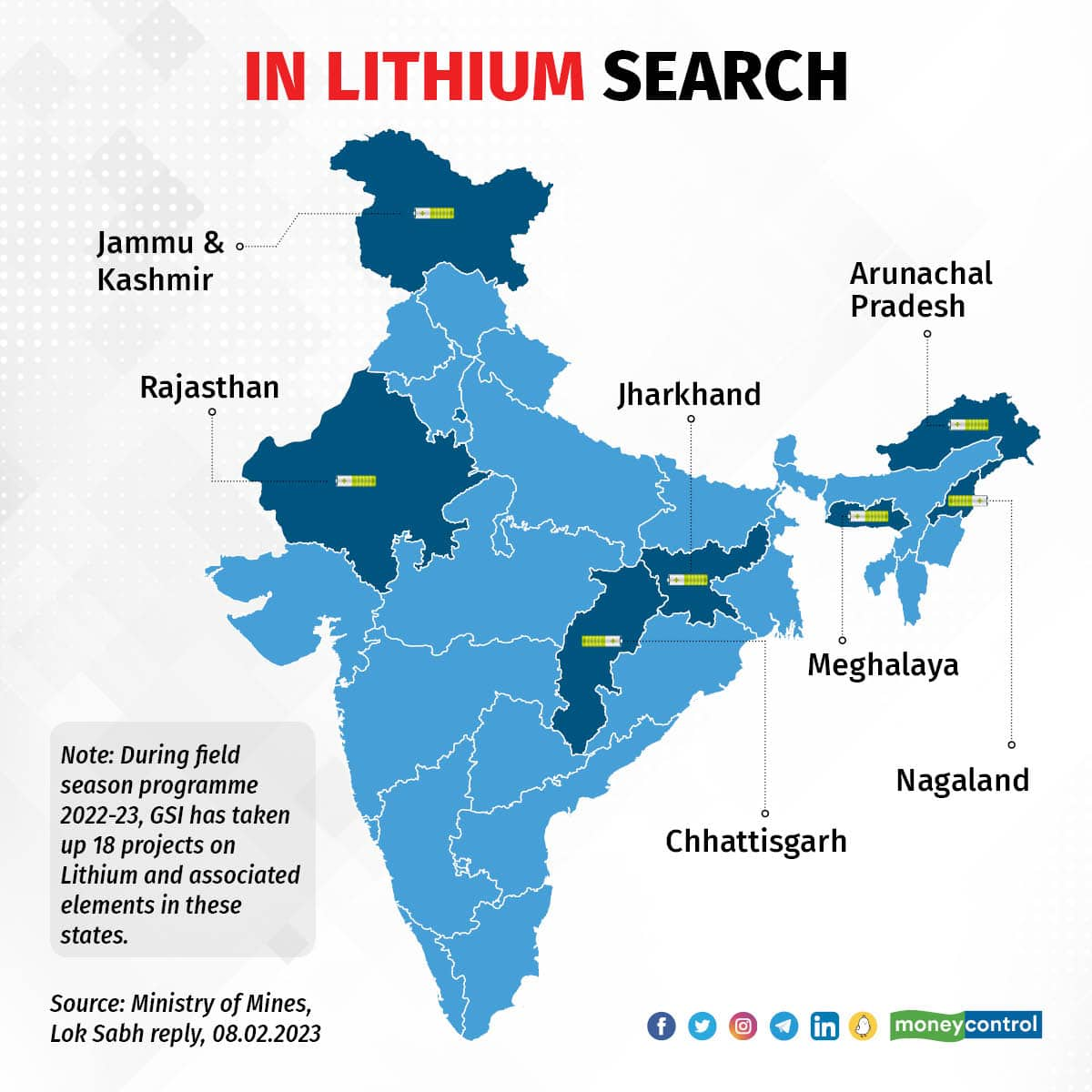
Why in News?
The news of potentially significant reserves of lithium in J&K and Rajasthan in India has been welcomed universally.
About Lithium:
- It is a soft, silvery-white non-ferrous metal and is one of the key components in rechargeable batteries for mobile phones, laptops, digital cameras and electric vehicles.
- It is also used in some non-rechargeable batteries for things like heart pacemakers, toys and clocks.
Lithium Reserves in India:
- The Geological Survey of India (GSI) had for the first time in India's history established Lithium inferred resources of 5.9 million tonnes in Jammu and Kashmir’s Reasi district.
- Months after India's first lithium reserves, the GSI has found another reserve of the crucial mineral in Degana in Rajasthan's Nagaur district.
- These reserves are believed to be much bigger in quantity (than found in J&K) and can meet 80% of the total country's demand.
Why Access to or Control over Lithium is Important?
- India’s electric-vehicle (EV) market was valued at $383.5 million in 2021, and is expected to expand to $152.21 billion in 2030.
- India imported 450 million units of lithium batteries valued at $929.26 million (₹6,600 crore) in 2019-2020.
- The ongoing global transition to low-carbon economies, the rapid expansion of artificial intelligence (AI), and 5G networks will greatly reshape global and regional geopolitics.
Who Should Own these Minerals?
- Private ownership: In 2013, the Supreme Court of India ruled that the owner of the land has rights to everything beneath.
- Public ownership: Forests (which make up more than 22% of India’s landmass), hills, mountains, and revenue wasteland are publicly owned.
- Ownership of Lithium: According to the SC, the Union government could ban private actors from mining sensitive minerals, as is already the case with uranium under the Atomic Energy Act 1962.
- In today’s context, lithium is as important as uranium.
How do Other Countries Manage Lithium Reserves?
- In Chile, the government has designated lithium as a strategic resource and its development has been made the exclusive prerogative of the state.
- A new “National Lithium Strategy” (2023) attempts to regulate the environmental impact of lithium-mining, distribute revenue more fairly among local communities, and promote lithium-based green technologies.
- Bolivia’s new constitution gave the state “the control and direction over the exploration, exploitation, industrialisation, transport, and commercialisation of natural resources.”
- This is believed to be one of the factors for the country’s failure to produce any lithium at a commercial scale.
- The new government wants to join hands with other Latin American countries to design a ‘lithium policy’ that would benefit all their economies.
- Mexico also nationalised lithium, declaring, “Oil and lithium belong to the nation, they belong to the people of Mexico.”
Way Ahead for India:
- Much of India’s mineral wealth is mined from regions with very high levels of poverty, environmental degradation, and lax regulation.
- Effective and careful management of the sector should be paramount if India’s rare minerals development is to meet its multiple goals - social wellbeing, environmental safety, and national energy security.
Source: The Hindu
GS-II
Manipur: The Demand for Separate Administration and the Challenges Ahead
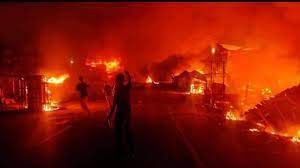
Why in News?
The recent demand for a separate administration in Manipur has sparked widespread discussions on the sanctity of borders and the territorial integrity of the state. The demand, supported by various Kuki-Zo legislators highlights the alleged tacit support of the Manipur government towards violence against the Chin-Kuki-Mizo-Zomi hill tribals. The counter-response from Meitei groups advocating for the protection of the state’s territorial integrity further complicates the situation.
Causes of the riots in Manipur
- The principal cause of the riots in Manipur is the failure of the state government to recognize and accommodate the territorial rights and identities of the different communities in the state.
- The state’s aggressive integrationist project, which seeks to dissolve tribal land rights in the valley areas, has been a major source of tension between the Meitei and tribal communities.
- Additionally, in April 2023, The Manipur High Court’s order to expedite the recommendation for granting ST status to the Meiteis further inflamed the tribal sentiments and led to the massive protest on May 3.
Factors contributing to the increasing demand for a separate administration in Manipur
- Ethnic Tensions and Divisions: Manipur is home to diverse ethnic communities, including the Kuki-Zo and Meitei groups. Ethnic tensions and historical divisions have persisted for years, leading to a sense of marginalization and a desire for separate administrative arrangements.
- Failure of Previous Arrangements: Previous attempts to address the concerns of tribal communities, such as the proposal for a Union Territory or inclusion in the Sixth Schedule, have been perceived as inadequate or non-serious. The lack of tangible progress has intensified the demand for a more comprehensive and separate administrative setup.
- Demographic Changes and Displacement: The extensive violence, displacement of populations, destruction of property, and loss of lives in recent times have significantly altered the demographic landscape of Manipur. These changes have deepened the divide between different communities and created a sense of irreparable separation.
- Economic Considerations: The Kuki-Zo-dominated districts of Manipur, such as Pherzawl and Churachandpur, possess valuable natural resources and strategic gateways to Southeast Asia. Proponents of a separate administration argue that harnessing these resources and leveraging the region’s economic potential would be better served under a distinct administrative framework.
- Lack of Trust in the Current System: The demand for a separate administration reflects a deep-seated mistrust in the existing political and administrative structures. Some communities believe that their interests and concerns are not adequately represented or addressed within the current system, leading to a call for a separate administrative entity.
- Popular Support and Mobilization: The current demand for a separate administration enjoys unprecedented popular support among the Kuki-Zo groups. This widespread backing has galvanized community members and fueled a sustained mobilization effort, making the demand a significant force in Manipur’s political landscape.
- Alleged Government Support for Violence: The demand stems from allegations that the Manipur government has tacitly supported violence against the Chin-Kuki-Mizo-Zomi hill tribals. The perception of government inaction or indifference has fuelled discontent among the affected communities.
Constitutional Challenges for the implementation of a separate administration in Manipur
- Article 3 of the Constitution: The power to effect changes in a state’s border lies with the central government, as outlined in Article 3 of the Constitution. This provision grants unilateral power to the center to alter state boundaries.
- Opposition from Naga Groups: Granting a separate administration for Kuki-Zo in Manipur’s hill areas could face opposition from certain Naga groups. These groups may be reluctant to compromise on their territorial aspirations, particularly concerning the Naga’s demand for a sovereign ‘Nagalim.’ Finding a resolution that satisfies the demands of both communities is a significant challenge.
- Resistance from the State Government and Meitei Groups: The Manipur state government and Meitei groups may staunchly oppose the demand for a separate administration. They might advocate for maintaining the territorial integrity of Manipur and resist any attempts to alter the administrative setup.
- Revisiting Constitutional Arrangements: Establishing a separate administration in Manipur would necessitate revisiting and potentially amending the existing constitutional arrangements. This could involve dissolving sub-state constitutional asymmetrical arrangements, such as Article 371C, district councils, and tribal land rights.
- Overlapping Ethnic Boundaries: Manipur’s ethnic dynamics present a challenge when determining the territorial boundaries of a separate administration. Some districts, such as Chandel, Kamjong, and Tengnoupal, have mixed populations and historical territorial disputes between the Kukis and Nagas. Resolving these territorial complexities and addressing the concerns of all communities is a delicate task.
- Economic Viability: Critics may raise concerns about the financial sustainability and resource allocation for the proposed administrative entity. Demonstrating the economic potential and strategic advantages of a separate administration is crucial to counter these arguments.
Way ahead
- Dialogue and Negotiation: Facilitating a dialogue between the various stakeholders, including the Kuki-Zo groups, Meitei communities, Nagas, and the state government, is essential. Open and constructive discussions can help identify common ground and potential areas of compromise.
- Constitutional Reforms: Given the constitutional complexities involved, exploring options for constitutional reforms may be necessary. This could involve amending Article 3 to ensure greater involvement of the affected states in decisions regarding border changes, thereby addressing concerns about the exercise of unilateral power by the Centre.
- Devolution of Power: Considering the overlapping ethnic boundaries in Manipur’s districts, there could be a focus on devolving power and granting autonomy to local communities within a framework of non-territorial and territorial autonomy.
- Resource Management and Economic Development: Strategically leveraging the rich natural resources and strategic gateways in the Kuki-Zo-dominated districts, such as the natural gas belt and access to Southeast Asia, can contribute to the economic development of the region and provide incentives for a separate administration.
Inclusive Governance: Any solution should prioritize inclusive governance that recognizes and respects the rights and aspirations of all communities in Manipur. Ensuring equitable representation, protection of minority rights, and mechanisms for peaceful coexistence are essential components of a sustainable way forward. - Learning from International Examples: Drawing lessons from federal polities like Belgium, Canada, the Netherlands, and Switzerland, where territorial divisions have been managed successfully, can provide valuable insights. Understanding their experiences and practices in accommodating territorially mobilized groups can inform the way forward in Manipur.
- Building Trust and Reconciliation: Addressing historical grievances, fostering social harmony, and promoting reconciliation among communities are crucial for long-term stability. Efforts should be made to build trust, bridge divides, and promote understanding among different ethnic groups in Manipur.
Conclusion
- With unprecedented popular support and the Rubicon of division already crossed, Manipur faces constitutional challenges in effecting this demand. The unresolved debate surrounding Manipur’s administrative future hinges on aligning agendas, ideas, and interests across India’s multi-level federal polity and processes.
Source: The Hindu
Telangana Statehood Day
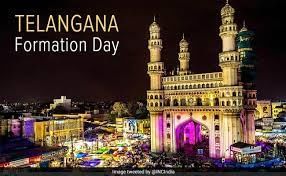
Why in News?
With assembly elections just months away, political parties across the board are celebrating the 9th anniversary of Telangana’s statehood today (June 2).
Formation of Telangana
- The article discusses the historical background and the struggle for statehood that led to the formation of Telangana, the newest state in India.
- It provides a chronological account of the significant events and factors that shaped Telangana’s journey towards becoming an independent state.
Why was Telangana separated from Andhra Pradesh?
Telangana was separated from Andhra Pradesh primarily due to historical, cultural, and developmental reasons, as well as demands from the people of the region. Here are the key reasons behind the separation:
- Historical and Cultural Differences: Telangana and Andhra Pradesh have distinct historical and cultural identities. Telangana had its own language, Telugu, but with a distinct dialect and cultural practices. The people of Telangana felt that their unique identity was not adequately recognized or represented within the larger Andhra Pradesh state.
- Socio-economic Disparities: Telangana region, despite its rich natural resources, had been relatively underdeveloped compared to the coastal Andhra region. People in Telangana felt that their region’s development needs were neglected, resulting in socio-economic disparities and unequal distribution of resources and opportunities.
- Demand for Local Control: The demand for separate statehood gained momentum due to the belief that local control and governance would be more effective in addressing the specific needs and aspirations of Telangana. The people of Telangana sought greater autonomy and decision-making power over their own affairs.
- Political Representation: Some leaders and groups within Telangana felt marginalized in the political landscape of united Andhra Pradesh. They believed that a separate state would provide better opportunities for political representation and participation.
- Water and Resource Sharing: Disputes over the sharing of water resources, particularly the Krishna and Godavari rivers, further strained the relationship between Telangana and Andhra Pradesh. The perceived inequitable distribution of water resources added to the demand for a separate state.
These factors, along with sustained movements and protests led by various political and social groups, culminated in the bifurcation of Andhra Pradesh and the formation of the separate state of Telangana on June 2, 2014.
Here is a complete timeline of the formation of the modern Telangana State
PART I: Pre-Independence and Formation of Andhra Pradesh
- Post-independence Hyderabad State (1948-1951): Hyderabad’s significance as a part of the Princely State and its dominance by the Urdu-speaking Muslim elite.
- Brutalities under Nizam’s rule and the Razakars (1945-1948): The communist-supported rebellion and the violent response of the Nizam’s local militia, the Razakars, leading to atrocities on Telangana’s population.
- Standstill Agreement and its violation (1947-1948): The signing of the Standstill Agreement with Hyderabad, the subsequent violation of its terms by the Nizam, and the intervention of India through “Operation Polo.”
- Hyderabad’s status as a Part-B state (1951-1956): The inclusion of Hyderabad as a Part-B state with an elected chief minister after India’s independence and the end of Nizam’s rule.
PART II: Linguistic Reorganisation and Creation of AP
- Potti Sriramalu’s demand for a separate Telugu state (1952): The fasting protest by Potti Sriramalu, leading to unrest and eventually the formation of Andhra State.
- Formation of Andhra State out of Madras state (1953): The division of the Madras state and the creation of Andhra State, comprising the north and north-eastern regions, in response to the demand for a separate Telugu state.
- Formation of the States Reorganisation Committee (1953-1955): The establishment of the committee to address the issue of linguistic reorganisation and its subsequent recommendations.
- Status of Telangana region in linguistic reorganisation (1955-1956): The debate over the merging of Telangana with Andhra or having it as a separate state, conflicting with the SRC’s recommendations.
- Merging of Andhra State and Telangana (1956): The decision to merge Andhra State and Telangana against the SRC’s recommendation, resulting in the formation of Andhra Pradesh with Hyderabad as its capital.
PART III: Struggle for Telangana and Creation of Telangana State
- Pre-Independence protests for Mulki Rules (1952-1947): The protests demanding the enforcement of Mulki Rules, which ensured job reservations for Telangana domiciles, even before India’s independence.
- Protests and birth of Telangana Praja Samiti in 1969: The widespread protests in 1969, leading to the establishment of the TPS and the call for a separate Telangana state.
- Repeal of Mulki Rules Act in 1973: The introduction of the 32nd Amendment to the Constitution by Indira Gandhi, repealing the Mulki Rules Act and impacting the Telangana movement.
- Revival of the Telangana movement by KCR in 2001: KCR’s resignation from the Telugu Desam Party and the formation of the Telangana Rashtra Samithi, rejuvenating the demand for a separate Telangana state.
- KCR’s fast-unto-death and the promise of Telangana statehood (2009): KCR’s fast-unto-death in 2009 following the death of Andhra Pradesh’s Chief Minister, Y S Rajsekhara Reddy, leading to the Congress party’s promise of creating Telangana.
- Formation of Telangana state in 2014: The culmination of the struggle with the formation of Telangana as a separate state in 2014, with Hyderabad serving as the capital for a period of ten years.
Source: Indian Express
GS-III
What is Apoptosis?
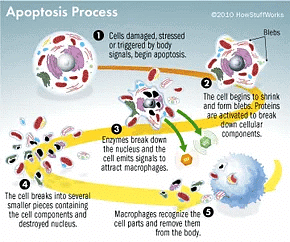
Why in News?
For the first time, scientists have described a special molecular mechanism of the early phases of programmed cell death, often known as apoptosis.
About Apoptosis:
- It is the process of programmed cell death.
- It is a mechanism that allows cells to self-destruct when stimulated by the appropriate trigger.
- Process:
- It involves condensation of the nucleus and cytoplasm, followed by cellular partitioning into well-defined fragments for disposal.
- The damaged cells are disposed of in an orderly fashion.
- It is used during early development to eliminate unwanted cells; for example, those between the fingers of a developing hand.
- In adults, apoptosis is used to rid the body of cells that have been damaged beyond repair and have become a threat to survival. Such cells can include cancer cells or cells that are infected with bacteria or a virus.
- Apoptosis also removes cells that are normal but no longer needed, such as cells that produce antibodies after the need for the antibody has passed.
- Apoptosis can also be triggered in otherwise normal cells by external stimuli, including nutrient removal, toxins, hormones, heat, and radiation.
- Too much apoptosis in an otherwise normal human being will result in a number of so-called neurodegenerative diseases where cells die when they're not supposed to die.
- It is estimated that a mass of cells equal to body weight is removed by apoptosis each year.
Source: The Print
Udanti Sitanadi Tiger Reserve
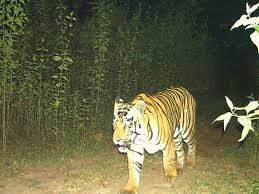
Why in News?
Villagers recently attacked a team of forest personnel and injured three of them when they arrived to clear encroachments inside the Udanti Sitanadi tiger reserve.
About Udanti Sitanadi Tiger Reserve:
- Location: It is located in the Indian state of Chhattisgarh.
- Udanti and Sitanadi are two wildlife sanctuaries combined together, covering a total area of 1842.54 kilometre square.
- It was declared a tiger reserve in the year 2008-09.
- The Udanti river flow through the Reserve. There is few perennial springs including the famous Deodhara and Godene falls.
- Topography: The topography of the area is a broken mass of land traversed by innumerable hill ranges intercepted by strips of plains.
- Flora:
- The flora of the tiger reserve contains various types of forest crop mixed with Sal forest.
- Dry Deciduous Forests, Tropical and Sub-Tropical vegetation is also observed here.
- Fauna:
- All the representative faunal species of Central India are found in both the Core areas of UdantiSitanadi Tiger reserve.
- Asiatic Wild Buffalo is the key endangered species found in the Core Area.
- Apart from the tiger other endangered and rare species are Indian Wolf, Leopard, Sloth Bear and Mouse Deer.
Source: PIB
The Need for Fact-Checking Units to Combat Fake News
Why in News?
The IT (Intermediary Guidelines and Digital Media Ethics Code) Amendment Rules, 2023 aim to tackle the dissemination of false or misleading information through the introduction of fact-checking units. In light of the detrimental impact of fake news, particularly during the Covid-19 crisis, governments worldwide have recognized the urgency to combat this menace. India, in particular, has experienced a surge in fake news related to the pandemic, making it crucial for the government to proactively address the issue.
What is mean by Fake news?
- Fake news refers to intentionally fabricated or misleading information presented as if it were real news. It can be spread through traditional media sources like newspapers or television, but it is more commonly associated with social media platforms and other online sources.
- Fake news can range from completely made-up stories to misleading headlines and selectively edited or out-of-context information designed to deceive readers.
- It is often used for political purposes, to manipulate public opinion or to spread misinformation about individuals, organizations or events
- Scholars at the Massachusetts Institute of Technology even found that falsified content spreads six times faster than factual content on online platforms.
The Menace of Fake News
- Dissemination of misinformation: Fake news spreads false or misleading information, leading to a distortion of facts and events. This can misguide individuals and the public, leading to incorrect beliefs and actions.
- Erosion of trust: Fake news undermines trust in media organizations, journalism, and sources of information. When people encounter fake news repeatedly, it becomes challenging to distinguish between reliable and unreliable sources, eroding trust in the media landscape.
- Manipulation of public opinion: Fake news is often created with the intent to manipulate public sentiment and shape public opinion on specific issues, individuals, or events. This manipulation can have far-reaching effects on public discourse and decision-making processes.
- Polarization and division: Fake news can contribute to the polarization of society by promoting extreme viewpoints, fostering animosity, and deepening existing divisions. It can exacerbate social, political, and cultural conflicts.
- Personal and reputational harm: Individuals, public figures, and organizations can suffer reputational damage due to false information circulated through fake news. Innocent people may be targeted, leading to personal, professional, and social repercussions.
- Public safety concerns: Fake news related to public safety issues, such as health emergencies or natural disasters, can spread panic, hinder effective response efforts, and jeopardize public safety. It can impede the dissemination of accurate information and guidance.
What is mean by Deepfakes?
- Deepfakes refer to synthetic media or manipulated content created using deep learning algorithms, specifically generative adversarial networks (GANs).
- Deepfakes involve altering or replacing the appearance or voice of a person in a video, audio clip, or image to make it seem like they are saying or doing something they never actually did. The term “deepfake” is a combination of “deep learning” and “fake.
- Deepfake technology utilizes AI techniques to analyze and learn from large datasets of real audio and video footage of a person.
The Rise of Deepfakes
- Advanced manipulation technology: Deepfakes leverage deep learning algorithms and artificial intelligence to convincingly alter or generate realistic audio, video, or images. This technology enables the creation of highly sophisticated and deceptive content.
- Spreading disinformation: Deepfakes can be used as a tool to spread disinformation by creating fabricated videos or audio clips that appear genuine. Such manipulated content can be shared on social media platforms, leading to the viral spread of false information.
- Political implications: Deepfakes have the potential to disrupt political landscapes by spreading misinformation about politicians, political events, or election campaigns. Fabricated videos of political figures making false statements can influence public opinion and undermine trust in democratic processes.
- Amplifying fake news: Deepfakes can amplify the impact of fake news by adding a visual or audio component, making false information appear more credible. Combining deepfakes with misleading narratives can significantly enhance the persuasive power of fabricated content.
- Challenges for content verification: The emergence of deepfakes presents challenges for content verification and authentication. The increasing sophistication of deepfake technology makes it harder to detect and debunk manipulated content, leading to a potential erosion of trust in online information sources.
- Detection and mitigation efforts: Efforts are underway to develop deepfake detection tools and techniques. Researchers, tech companies, and organizations are investing in AI-based solutions to identify and combat deepfakes, aiming to stay ahead of the evolving manipulation techniques.
Existing Provisions to Combat Fake News
- Intermediary Guidelines of 2021: The most preferred democratic process to combat the threats and impact of fake news on a polity would be through Parliament-enacted laws. India opted for the speedier alternative of an addition to the Intermediary Guidelines of 2021 (as amended), through Rule 3(1)(v).
- Can not disseminate misleading content: Under this rule, intermediaries including social media platforms have to ensure that users do not disseminate content that deceives or misleads on the origin or knowingly and intentionally communicates any information which is patently false or misleading in nature but may reasonably be perceived as a fact
Importance of Fact-Checking Units
- Ensuring accuracy: Fact-checking units play a crucial role in verifying the accuracy of information circulating in the media and online platforms. They employ rigorous research and investigation techniques to assess the credibility and truthfulness of claims, helping to distinguish between reliable information and misinformation.
- Countering fake news: Fact-checking units are instrumental in combating the spread of fake news and misinformation. By systematically debunking false claims, identifying misleading narratives, and providing accurate information, they help to minimize the impact of false information on public perception and decision-making.
- Promoting media literacy: Fact-checking units contribute to promoting media literacy and critical thinking skills among the general public. Their work serves as a valuable resource for individuals seeking accurate information, encouraging them to question and verify claims rather than relying solely on unsubstantiated sources.
- Enhancing transparency: Fact-checking units operate with transparency, providing detailed explanations and evidence-based assessments of their findings. This transparency helps to build trust with the audience, fostering credibility and accountability in the information ecosystem.
- Holding accountable those spreading misinformation: Fact-checking units contribute to holding accountable those who deliberately spread misinformation or engage in disinformation campaigns. By publicly exposing false claims and identifying the sources of misinformation, they discourage the dissemination of false information and promote ethical standards in media and public discourse.
Conclusion
- With over 80 million Indian citizens online, the challenge of combating false information cannot be underestimated. The Indian government’s initiative to introduce fact-checking units reflects an understanding of the urgent need to tackle the spread of fake news. Jonathan Swift’s timeless quote, “Falsehood flies, and the truth comes limping after,” captures the essence of the problem we face today.
Source: The Hindu
|
38 videos|5283 docs|1116 tests
|


